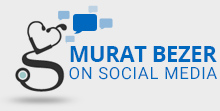Treatment in Scoliosis
A lateral curvature in our spine is called scoliosis. Orthopedics and traumatology specialist Prof. Murat Bezer states that this disease, which is often diagnosed in childhood, is progressive. He explained in detail, the non-surgical method in treating scoliosis.
Dr. Bezer points out that scoliosis in children is corrected via magnetically controlled growing rods without impairing the child’s growth.
Correcting the spine is the purpose
Prof. Bezer states that the treatment of scoliosis varies according to the patient’s age, the form and degree of his/her scoliosis. He emphasized that the purpose of treatment in children’s scoliosis is to prevent the extension of the scoliosis angle before spine is fully grown, and even to provide correction in some cases.
Prof. Bezer states that he suggests brace treatment for children patients who have scoliosis up to 25 degrees and do not have a structural defect in their spine. However, he adds that brace treatment is not suitable for all patients and surgical treatment comes into question in such a case. Surgery allows correcting the scoliosis and fixing (fusing) the corrected vertebrae. But he adopts a different technique for children and adolescent patients since this treatment will hinder the growth of the spine.
Prof. Bezer says that this longstanding method of treatment is called “growing rods” and continues:
“Two telescopic rods are implanted in the spine in such a way that it stabilizes all curved vertebrae. The patient visits the hospital at intervals of 6 months and the rods are lengthened in operating room environment until the spine is fully grown. This process involves 15-20 operations on average.”
Dr. Bezer says that in growing rods scoliosis surgeries, both children and their families go through a lot of material and moral trouble because of the frequent readjustment operations. He states that he uses magnetically controlled rods, which allow remote readjustment (without surgery) in the scoliosis therapy of children.
These magnetic rods eliminate the necessity of frequent (twice a year) operations. The patient undergoes only one operation. Dr. Bezer states that this technique is very different compared to the older ones and continues:
“We do not implant the rods from neck to lower back in this technique as it is widely practiced. Though it varies depending on the type of scoliosis, we often choose to make the shortest incision and implantation possible. Thus we operate on a smaller region in the ultimate operation and fuse the least possible number of vertebrae, providing a more active and close-to-normal spine for the patient.”
Advantages of this non-surgical treatment
Patients whom we implant magnetically growing rods are called for control once in 3 months. We then make the readjustment in clinical environment, on the examination couch according to the patient’s age and the degree of scoliosis.
The readjustment is made by special electronic apparatus that allow precise computerized measuring. Patients do not feel any pain during the readjustment other than insignificant tickles. Most children even enjoy that feeling. This system involves visiting the hospital every 3 months instead of 6. So the readjustment is more frequent and therefore healthier for a growing spine.
Readjusting the rods without surgery spares the child from frequent narcotization.
Scars and possible infections are avoided due to not opening the same location of the body again and again.
When we consider the children that undergo an extreme stress before every surgical operation, this technique spares them and their families from all the problems they go through in the old method of scoliosis surgery.








